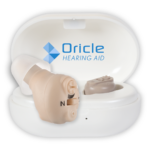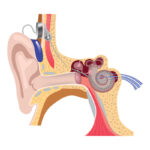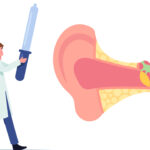Psychogenic Non Organic Hearing Loss
The determination of psychogenic non organic hearing loss is often difficult. Psychogenic hearing loss is difficult to distinguish from natural hearing loss because it has intangible causes such as genetics or the desire to be fair. In this article, I will discuss the Hummel double conversation test, the Chimani, Moos, Stengers, and Teals tests, and the Conversion disorder. I hope you find it helpful! Good luck! Here are the best tests for non organic hearing loss.
SRT-PTA discrepancy

While many parents are unhappy with their child's non organic hearing loss, this finding can become an issue after a clinic visit. The audiologist should discuss the findings and potential treatment options with parents, as the non organic thresholds are frequently the cause of attention issues or simply an excuse for poor school performance. While the parent's reaction may be a factor in the discrepancy, it's crucial to remember that the SRT-PTA relationship is not one-to-one.
To determine the relationship between SRT-PTA discrepancy and non organic hearing loss, patients must be tested at different frequencies. Usually, the SRT-PTA ratios will be within five to ten dB. A threshold of fifteen dB or more is indicative of a non organic hearing loss. However, even when test-retest reliability is good, a patient with a non-organic hearing loss may still be functional.
SRT-PTA discrepancy is measured using the same method as the PTA-PTA test. The difference between the two measures is called absolute time error. In a hearing test, this measure refers to the difference between the mean time under SAF and DAF. In the latter case, the absolute time error is more than 116.3 msec. The relative time error is calculated as the proportion of the SRT-PTA discrepancy between the two methods. A ratio of five or more is considered non organic hearing loss.
A patient's behavior and subjective complaints can also be used to determine if they have a non organic hearing loss. The audiologist should be aware of any discrepancy that may occur. If there is a significant discrepancy between SRT and PTA, it's important to determine the cause. In some cases, patients may experience a hearing loss because of an unrelated cause, such as an accident. A patient's behavior may also be a sign of a psychogenic condition.
A patient with non organic hearing loss is likely to have a significant amount of false-positive responses. False-positive responses are responses to test stimuli that are absent. Listeners with NOHL are often unwilling to cooperate with the audiometric task, making it difficult to distinguish between true and false-positive responses. In the study, 86% of listeners with true organic hearing loss exhibited false-positive responses, while only 22% did.
Hummel double conversation test

A Hummel double conversation test for non organic hearing loss is a simple, inexpensive screening test for this condition. It relies on the concept that individuals raise their voices when they encounter noise. Using separate speaking tubes for each ear, the patient reads prose while the noise is presented to the other ear. If the patient hears no false alarms during this time, he or she probably has a non organic hearing loss.
The non organic component is determined by comparing the exaggerated thresholds volunteered by the patient with the actual organic loss. This is called the Type V Bekesy pattern. This test is helpful to detect hearing loss that is underlying in both ears. A Hummel double conversation test for non organic hearing loss should be done on patients with a history of deafness and pseudohypacusis, which is a hearing disorder with a single ear.
The behavioral manifestations of non organic hearing loss may be caricature-like, but they are not surprising. While the test results may support a diagnosis of pseudohypacusis, behavioral signs are not conclusive evidence of non organic hearing loss. They raise the index of suspicion but do not indicate the patient's actual functional loss. However, behavioral signs of exaggeration can support a non organic hearing loss.
Patients with non organic hearing loss may obtain high scores even with low-level sensations. However, high-level speech recognition scores are not expected until the presentation level reaches 30 dB SL. A patient with 50 dB HL can score as high as 92% correct at 60 dB HL, a mere ten-dB lower than his or her admitted threshold. It is important to note that in the majority of cases, the result of the test is dependent on the presentation of the test as a counting test.
Another important aspect of non organic hearing loss is its ability to identify functional impairment. The patient's loudness response level, called the “functional component”, is related to the extent of the sensorineural loss. In mildly impaired patients, functional components do not significantly differ between frequencies. Thus, the Hummel double conversation test for non organic hearing loss is a routine test for diagnosis. In milder cases, the patient may have an exaggerated response to the test tones.
Chimani, Moos, Stengers and Teals test
A Chimani, Moos, Stegers, or Teals test for non organic hearing loss can detect the presence of a hearing loss. These tests use a technique known as the Stengers Principle, which states that a person will only hear the louder of two tones. The test is useful in cases of suspected unilateral non-organic hearing loss, which is also known as malingering. Ideally, the patient should be able to hear equally in both ears, but malingerers may fail to respond to the lower frequency in their right ear.
Another way to detect a hearing loss is to observe the patient's behavior. General behaviour is often a reliable clue. Patients with feigned deafness tend to avoid eye contact and make disparate lip movements. Observing a patient during casual periods is helpful in determining whether he is faking his deafness. A patient's response to a simple audiological test is often enough to make the diagnosis.
Patients with non-organic hearing loss may have bilateral normal hearing or be a malingerer. These patients try to make others believe their hearing loss is greater than it really is. In such a case, the Chimani, Moos, Stengers, and Teals test can be helpful to detect a non-organic hearing loss. These tests are particularly useful for patients who claim to hear via bone conduction.
Lombard's Test is based on the principle that individuals raise their voices when speaking in a loud environment. While a patient reads prose with a simulated ear, noise is applied to one ear, while the other is silenced. If the patient has an organic loss in the suspected ear, his voice level will increase. However, if the patient is faking a hearing loss, the voice level will fall.
The Rinne test, as well as Weber's test, can also be used to diagnose unilateral hearing loss. Both these tests use a vibrating tuning fork in the forehead, the vertex, and the mandibular symphysis. A sound from the vibrations travels directly to the cochlea, via the bone.
Conversion disorder
The symptoms of non-organic hearing loss due to conversion disorder are very similar to those of tinnitus. However, there are significant differences between the two conditions. The DSM-IV does not distinguish conversion from other neurological disorders, while the ICD-10 does. In addition, the new criteria for conversion disorder do not require a psychological stressor and do not require that feigning be disproven.
The behavioral manifestations of non organic hearing loss may be a caricature. However, the subtlety of the signs is not surprising. Although the diagnosis of pseudohypacusis depends solely on test results, such behavior may raise the index of suspicion. The presence of exaggerated or false-positive responses may indicate a diagnosis of non organic hearing loss but does not rule out other conditions.
Early identification of non organic hearing loss in children may help avoid pseudohypacusis. Psychogenic origins may make it difficult to distinguish between non organic and organic hearing loss in children. While most children who have non organic hearing loss do not appear to have significant emotional problems, a psychodynamic background may be a possible cause of the symptoms. In addition to psychological factors, Ross (1965) recommended that the early identification of non organic hearing loss in children may help prevent the development of pseudohypacusis in the child.
A pure tone threshold should be repeatable within a range of +/ five decibels. A ten-db difference between the two thresholds would indicate a non organic loss. Moreover, when the thresholds of two and three frequencies are not comparable, the patient might be categorized as non-organic. The same applies to the frequency range of the PTA. A difference of 15 dB or more between them may be indicative of a non organic hearing loss.
Sources
American Speech-Language-Hearing Association (ASHA). (n.d.). Nonorganic Hearing Loss. https://www.asha.org/PRPSpecificTopic.aspx?folderid=8589934956§ion=Assessment
Maes, I. H., Cima, R. F., Vlaeyen, J. W., & Anteunis, L. J. (2013). Tinnitus interference in daily life: A validation study of the Tinnitus Functional Index. PLoS One, 8(5), e62706. https://doi.org/10.1371/journal.pone.0062706
Pirozzo, S., & Celi, S. (2009). Pure-tone audiometry in diagnosis of nonorganic hearing loss. The Laryngoscope, 119(10), 2018-2023. https://doi.org/10.1002/lary.20615
Saliba, J., & Gavett, B. E. (2009). Nonorganic hearing loss. In T. L. Brannagan, J. M. DeToledo, & L. J. Ropper (Eds.), Neurologic clinics (Vol. 27, pp. 361-378). Elsevier. https://doi.org/10.1016/j.ncl.2008.11.002







